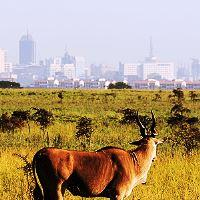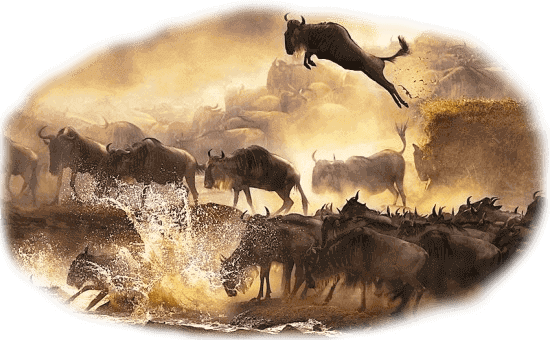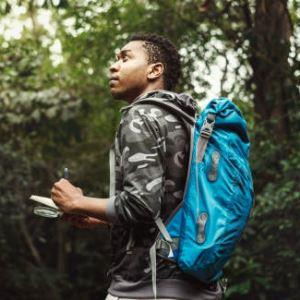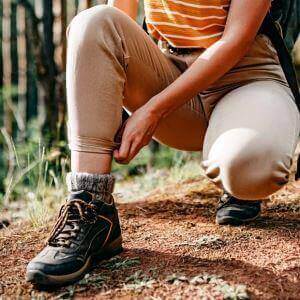 Kenya stands out as one of Africa’s most iconic safari destinations, offering Italian tourists a truly memorable safari tour experience with its vast savannahs, thriving wildlife, and warm hospitality. But timing your trip is essential to ensure you witness Kenya at its best, especially if your goal is a thrilling safari adventure. The country’s varying seasons greatly influence the ease of wildlife viewing, road accessibility, and overall travel experience. For those eager to witness the awe-inspiring Great Migration, the ideal time to visit Kenya is between July and October. During these months, millions of wildebeests, zebras, and gazelles make their dramatic river crossings from Tanzania into Kenya’s Maasai Mara. It’s a once-in-a-lifetime event full of action and drama, as predators lurk nearby, awaiting their opportunity. Due to the high tourist interest during this season, it’s advisable to book accommodations and safari tours well in advance. Another excellent period for safaris falls within the dry season, which spans from late June to October. With limited water sources available, animals congregate around rivers and waterholes, making them easier to spot. The weather is generally dry and sunny, creating perfect conditions for photography and game drives. Italian travelers will appreciate not only the abundant wildlife but also the pleasant climate, making outdoor activities more enjoyable. The shoulder season from January to March also has its charm. This is the time when many animals give birth, offering tourists the chance to see newborns and witness fascinating interactions in the wild. It’s less crowded compared to the peak migration season, which means more intimate safari experiences. Bird enthusiasts will also find this period rewarding as migratory species add color to Kenya’s skies. The rainy seasons, especially from March to May, are generally considered less favorable for safaris due to muddy trails and reduced wildlife visibility. However, these months also bring dramatic landscapes, blooming flora, and significantly lower prices on accommodations. Travelers looking for peace and budget-friendly options might still enjoy this time, though flexibility and preparation are key. The best months for Italians to go on Kenya safari depend on individual interests, whether that’s witnessing the Great Migration, enjoying the lush greenery of the wet season, or observing newborn wildlife in quieter periods. Each season offers its own distinct experiences that cater to a range of preferences. July to October is perfect for those who want the full spectacle of nature, while January to March offers more peaceful, intimate encounters with animals and birdlife. Those who prioritize budget-friendly travel and don’t mind the rain may find value in visiting during the green season, especially in November or early May. The countryside is breathtakingly green, and there are fewer tourists, making for a serene escape. Travelers should be prepared for some weather-related inconveniences and plan accordingly. The decision rests on what type of adventure Italian tourists seek. Whether it’s dramatic wildlife encounters, tranquil landscapes, or immersive cultural interactions, Kenya provides a diverse safari palette year-round. With careful planning and a bit of flexibility, Italian travelers can tailor their safari to match their desires and ensure a journey that is not only memorable but also uniquely their own.
Kenya stands out as one of Africa’s most iconic safari destinations, offering Italian tourists a truly memorable safari tour experience with its vast savannahs, thriving wildlife, and warm hospitality. But timing your trip is essential to ensure you witness Kenya at its best, especially if your goal is a thrilling safari adventure. The country’s varying seasons greatly influence the ease of wildlife viewing, road accessibility, and overall travel experience. For those eager to witness the awe-inspiring Great Migration, the ideal time to visit Kenya is between July and October. During these months, millions of wildebeests, zebras, and gazelles make their dramatic river crossings from Tanzania into Kenya’s Maasai Mara. It’s a once-in-a-lifetime event full of action and drama, as predators lurk nearby, awaiting their opportunity. Due to the high tourist interest during this season, it’s advisable to book accommodations and safari tours well in advance. Another excellent period for safaris falls within the dry season, which spans from late June to October. With limited water sources available, animals congregate around rivers and waterholes, making them easier to spot. The weather is generally dry and sunny, creating perfect conditions for photography and game drives. Italian travelers will appreciate not only the abundant wildlife but also the pleasant climate, making outdoor activities more enjoyable. The shoulder season from January to March also has its charm. This is the time when many animals give birth, offering tourists the chance to see newborns and witness fascinating interactions in the wild. It’s less crowded compared to the peak migration season, which means more intimate safari experiences. Bird enthusiasts will also find this period rewarding as migratory species add color to Kenya’s skies. The rainy seasons, especially from March to May, are generally considered less favorable for safaris due to muddy trails and reduced wildlife visibility. However, these months also bring dramatic landscapes, blooming flora, and significantly lower prices on accommodations. Travelers looking for peace and budget-friendly options might still enjoy this time, though flexibility and preparation are key. The best months for Italians to go on Kenya safari depend on individual interests, whether that’s witnessing the Great Migration, enjoying the lush greenery of the wet season, or observing newborn wildlife in quieter periods. Each season offers its own distinct experiences that cater to a range of preferences. July to October is perfect for those who want the full spectacle of nature, while January to March offers more peaceful, intimate encounters with animals and birdlife. Those who prioritize budget-friendly travel and don’t mind the rain may find value in visiting during the green season, especially in November or early May. The countryside is breathtakingly green, and there are fewer tourists, making for a serene escape. Travelers should be prepared for some weather-related inconveniences and plan accordingly. The decision rests on what type of adventure Italian tourists seek. Whether it’s dramatic wildlife encounters, tranquil landscapes, or immersive cultural interactions, Kenya provides a diverse safari palette year-round. With careful planning and a bit of flexibility, Italian travelers can tailor their safari to match their desires and ensure a journey that is not only memorable but also uniquely their own.
Kenya Safari Seasons Overview for Italian Travelers
| Safari Season | Months | Highlights for Italian Tourists |
|---|---|---|
| Peak Season | July to October | Great Migration, abundant wildlife |
| Shoulder Season | January to March | Baby animals, fewer tourists |
| Green Season | November & May | Lush scenery, discounted rates |
| Rainy Season (Avoid) | March to May | Heavy rains, limited accessibility |
Best Time to Witness Kenya's Great Migration in Maasai Mara
The Great Migration is one of the most spectacular natural events on Earth, and Kenya’s Maasai Mara is a front-row seat to this awe-inspiring phenomenon. Italian tourists planning a safari to witness this marvel should aim to visit between July and October. During these months, vast herds of wildebeests, zebras, and gazelles journey from Tanzania's Serengeti into Kenya, braving crocodile-infested rivers and prowling predators in search of greener pastures. It’s a dramatic, raw display of life and survival that defines the essence of the African wilderness. The dry season during these months not only makes the migration easier to follow but also ensures optimal game-viewing conditions. The vegetation is sparse, and water sources are limited, making wildlife easier to spot around rivers and waterholes. The weather is generally pleasant, with clear skies that are ideal for photography and game drives. For Italian couples looking for a romantic and thrilling adventure, this period offers unmatched intimacy with nature, especially when enhanced by guided safari experiences in Kenya for Italian couples. It’s important to note that this is also Kenya’s peak safari season. As such, early bookings are essential to secure accommodations and preferred tour packages, especially for travelers seeking luxury or boutique experiences. Many of the premier lodges and tented camps in and around the Maasai Mara operate at full capacity during these months due to the high international demand. Italian tourists interested in staying in exclusive camps with prime viewing spots or those offering private guides should plan several months in advance to ensure availability. Booking early allows travelers to take advantage of better flight deals and more flexible itineraries. This is particularly useful for couples or families who may want to combine the safari experience with other attractions such as beach holidays in Diani or cultural visits to local Maasai communities. By locking in arrangements ahead of time, Italian tourists can reduce stress and focus on enjoying their trip. The dry season not only provides a front-row seat to the Great Migration but also delivers optimal safari conditions with minimal rainfall, making logistics smoother and the terrain more accessible. Roads are more navigable, wildlife is easier to spot around limited water sources, and the overall safari experience becomes more enjoyable and efficient. The absence of rain means clearer skies, which are perfect for photography and scenic views. This allows Italian tourists to fully immerse themselves in the dramatic and diverse ecosystems of Kenya, from the golden plains of the Maasai Mara to the acacia-dotted savannahs of Amboseli. In addition to better wildlife sightings, the dry season brings more predictable schedules and fewer weather disruptions, allowing for uninterrupted game drives and excursions. Many lodges also offer special bush dinners, sundowners, and night drives during this period, enhancing the overall safari adventure. With the right planning and timing, travelers can capture unforgettable moments, build deep connections with nature, and return home with lasting memories of Kenya's wild beauty.
Great Migration Viewing Months in Maasai Mara for Italian Tourists
Kenya's Maasai Mara offers Italian tourists an unforgettable safari experience, particularly during the annual Great Migration. This natural spectacle is a major draw for wildlife enthusiasts worldwide, showcasing millions of wildebeests, zebras, and gazelles journeying across the plains from Tanzania’s Serengeti into Kenya. To fully enjoy this event, understanding the ideal time to visit and what to expect can make all the difference in crafting a successful safari itinerary.
Best Months to Visit
- July to October: These months mark the peak of the Great Migration in the Maasai Mara. Herds gather and make dramatic river crossings, pursued by predators like lions and crocodiles. This is the prime time for wildlife photography and breathtaking safari drives.
Why This Period Stands Out
- Dry Weather: The weather is generally sunny and dry, making road conditions favorable and wildlife easier to spot around waterholes.
- Photographic Opportunities: Clear skies and golden landscapes create perfect lighting for capturing dramatic moments.
- High Predator Activity: Due to the abundance of prey, predators are especially active, giving tourists the chance to observe thrilling chases and behaviors.
Things to Keep in Mind
- High Demand: July to October is Kenya's peak safari season. Booking accommodations and tours several months in advance is essential.
- Exclusive Experiences: For couples or those looking for added comfort, many lodges offer guided safari experiences in Kenya for Italian couples, featuring private game drives, romantic sundowners, and cultural visits.
- Extended Travel Options: Consider combining your safari with a beach extension in Mombasa or Diani for a well-rounded Kenyan holiday.
By visiting during the migration season and planning thoughtfully, Italian tourists can enjoy not only the visual drama of the animal kingdom but also the tranquility and beauty of Kenya’s most iconic landscapes.
Ideal Safari Season in Kenya for Italian Travelers Seeking Wildlife
Choosing the right time to go on safari is crucial for Italian travelers seeking an immersive and unforgettable experience in Kenya. With its diverse ecosystems and abundance of wildlife, Kenya offers exceptional game viewing throughout the year. However, certain months stand out for providing optimal conditions for wildlife sightings, comfortable weather, and overall travel convenience. From late June to October, Kenya enters its dry season. This is widely regarded as the best time for safaris due to the sparse vegetation and the concentration of animals around water sources. Wildlife is easier to spot, and the chances of seeing the Big Five are significantly higher. The dry, sunny weather also makes for ideal photography conditions, with golden light and clear skies enhancing the landscape. For Italian tourists, this season is especially attractive, offering both adventure and ease of travel. The period from January to March, often considered the shoulder season, also presents a great opportunity for safari-goers. During these months, the savannah comes alive with newborn animals, providing a chance to witness rare interactions between predators and their young prey. Bird watchers will also find this season rewarding as many migratory species settle in the region. Visitor numbers are lower compared to the peak migration months, making for a more intimate and tranquil experience. The months of March through May mark Kenya’s long rainy season. Heavy rainfall can lead to muddy roads and less predictable wildlife sightings, making travel logistics more challenging. However, the scenery during this period is breathtaking, with vibrant green landscapes and fewer tourists. This season is best suited for seasoned travelers looking for budget-friendly options and don’t mind occasional inconveniences. The short rains in November and early December usher in Kenya’s green season. Though not ideal for every traveler, it offers lush scenery and discounted rates. Certain regions remain accessible, and wildlife is still present, albeit slightly more dispersed. Understanding the benefits of each season ensures Italian tourists can plan a safari tailored to their preferences and travel goals. For those who dream of witnessing large herds of elephants, lions on the hunt, or cheetahs sprinting across the plains, aligning your travel dates with optimal wildlife activity is key. Each season in Kenya offers its own unique rewards, from dramatic migrations to quiet moments of nature at its most intimate. Whether you seek the thrill of a predator chase or a peaceful sunrise over the savannah, timing makes all the difference. Wildlife behavior, accessibility, and even pricing vary greatly by month. The dry season, when animals congregate near waterholes and visibility is high, tends to offer the most rewarding game drives. In contrast, the green season may be ideal for photography and birdwatching, thanks to lush backdrops and fewer tourists. The peak safari season in Kenya for Italian travelers, from July to October, remains the top choice for those who want the best of everything: game density, weather, and experience. During this period, the Great Migration often reaches the Maasai Mara, filling the landscape with dramatic scenes and incredible photo opportunities. Clear skies, mild temperatures, and rich biodiversity make this season highly sought after. Though prices and demand are higher, the value of the experience is unparalleled.
Best Wildlife Viewing Months in Kenya for Italian Safari Enthusiasts
Understanding Kenya's seasonal weather patterns is key for Italian tourists aiming to get the most out of their safari adventures. Each season offers different experiences based on climate, wildlife behavior, and accessibility. Here's a breakdown of Kenya safari weather by season for Italian tourists, helping you choose the right time for your journey:
- Dry Season (Late June to October): This is considered the best time for game viewing. The weather is dry and sunny, making it easier to spot animals gathered around water sources. The sparse vegetation also improves visibility. These months are perfect for photography, with golden light and clear skies enhancing the landscape.
- Shoulder Season (January to March): This period offers a quieter safari experience. It’s calving season, so tourists can witness newborn animals and predator-prey interactions. The weather remains relatively dry and warm, and birdwatchers will enjoy seeing migratory species.
- Green Season (November and May): Although some rains occur, the landscapes are lush and green, creating beautiful scenery for photos. Visitor numbers are lower, making for a peaceful experience. Some lodges offer discounted rates during these months.
- Long Rainy Season (March to May): This season brings heavy rains that can disrupt travel plans. Roads may be muddy and wildlife more dispersed, making game viewing a bit more challenging. Still, it’s a budget-friendly option for those who don’t mind the rain and want a quiet getaway.
Choosing the right season ensures that Italian travelers experience Kenya at its finest, tailored to their interests and comfort.
Tips and Travel Advice for Italian Tourists Planning Kenya Safaris
 Planning a safari to Kenya is an exciting experience, especially for Italian tourists eager to explore East Africa's world-renowned wildlife destinations. With a bit of preparation and insight into local conditions, travelers can ensure a smooth and enriching journey. From weather patterns to cultural etiquette, the following tips can help Italians make the most of their Kenyan adventure. Timing is everything. Kenya has two distinct rainy seasons the short rains in November and the long rains from March to May. These months can bring unpredictable weather and difficult road conditions, particularly in remote safari regions. Many lodges may also close or offer reduced services during the wettest periods. On the other hand, the green scenery and fewer tourists can appeal to those seeking serenity and lower prices. Health precautions are equally important. Italian tourists should consult a travel clinic before departure to ensure they have the necessary vaccinations, including yellow fever. Anti-malarial medication is also recommended for most safari regions. Carrying mosquito repellent and lightweight, long-sleeved clothing can help protect against bites. Kenya is welcoming but traditional in many respects. Italian visitors are encouraged to dress modestly when outside safari camps and respect local customs and languages. Learning a few basic Swahili phrases can go a long way in creating positive interactions with local communities. Booking your trip through knowledgeable providers is another key to a great experience. Italian-friendly Kenya safari tour operators offer the advantage of Italian-speaking guides, tailored itineraries, and familiar customer service standards. This added convenience can significantly enhance the trip, particularly for first-time travelers to Africa. Pack smart to enhance your safari experience and ensure comfort throughout your journey. Essential items include high-quality binoculars for spotting distant wildlife, a reliable camera for capturing those once-in-a-lifetime shots, and plenty of sunscreen to protect against the equatorial sun. A wide-brimmed hat and polarized sunglasses can also make long game drives more comfortable by shielding you from the glare and heat. Footwear matters too. Choose sturdy, closed-toe walking shoes suitable for uneven terrain, especially if you plan to go on guided bush walks. Kenya’s landscapes can vary greatly between destinations, from dusty plains to grassy wetlands, so versatility in clothing is key. Pack light, breathable fabrics for daytime wear, and include a warm layer or two for chilly early mornings and evenings. A small medical kit with basic supplies, insect repellent, a refillable water bottle, and a power bank for charging devices are all helpful additions. If you’re traveling with children or elderly family members, don’t forget personalized essentials, medications, or any comfort items. With thoughtful preparation, Italian tourists can approach their safari with confidence, comfort, and the readiness to fully embrace the magic of Kenya’s wilderness creating lasting memories surrounded by some of the most iconic wildlife and landscapes on the planet.
Planning a safari to Kenya is an exciting experience, especially for Italian tourists eager to explore East Africa's world-renowned wildlife destinations. With a bit of preparation and insight into local conditions, travelers can ensure a smooth and enriching journey. From weather patterns to cultural etiquette, the following tips can help Italians make the most of their Kenyan adventure. Timing is everything. Kenya has two distinct rainy seasons the short rains in November and the long rains from March to May. These months can bring unpredictable weather and difficult road conditions, particularly in remote safari regions. Many lodges may also close or offer reduced services during the wettest periods. On the other hand, the green scenery and fewer tourists can appeal to those seeking serenity and lower prices. Health precautions are equally important. Italian tourists should consult a travel clinic before departure to ensure they have the necessary vaccinations, including yellow fever. Anti-malarial medication is also recommended for most safari regions. Carrying mosquito repellent and lightweight, long-sleeved clothing can help protect against bites. Kenya is welcoming but traditional in many respects. Italian visitors are encouraged to dress modestly when outside safari camps and respect local customs and languages. Learning a few basic Swahili phrases can go a long way in creating positive interactions with local communities. Booking your trip through knowledgeable providers is another key to a great experience. Italian-friendly Kenya safari tour operators offer the advantage of Italian-speaking guides, tailored itineraries, and familiar customer service standards. This added convenience can significantly enhance the trip, particularly for first-time travelers to Africa. Pack smart to enhance your safari experience and ensure comfort throughout your journey. Essential items include high-quality binoculars for spotting distant wildlife, a reliable camera for capturing those once-in-a-lifetime shots, and plenty of sunscreen to protect against the equatorial sun. A wide-brimmed hat and polarized sunglasses can also make long game drives more comfortable by shielding you from the glare and heat. Footwear matters too. Choose sturdy, closed-toe walking shoes suitable for uneven terrain, especially if you plan to go on guided bush walks. Kenya’s landscapes can vary greatly between destinations, from dusty plains to grassy wetlands, so versatility in clothing is key. Pack light, breathable fabrics for daytime wear, and include a warm layer or two for chilly early mornings and evenings. A small medical kit with basic supplies, insect repellent, a refillable water bottle, and a power bank for charging devices are all helpful additions. If you’re traveling with children or elderly family members, don’t forget personalized essentials, medications, or any comfort items. With thoughtful preparation, Italian tourists can approach their safari with confidence, comfort, and the readiness to fully embrace the magic of Kenya’s wilderness creating lasting memories surrounded by some of the most iconic wildlife and landscapes on the planet.
Travel Safety, Weather, and Cultural Tips for Italian Safari Visitors
When planning a safari to Kenya, Italian tourists should take into account key safety, cultural, and climate-related considerations to ensure a fulfilling and stress-free experience. Kenya is a safe and welcoming country, but like all travel to foreign destinations, informed preparation goes a long way toward a smooth journey. Safety is paramount. Italian travelers should choose reputable safari operators who are licensed and experienced. While on safari, always follow the guidance of professional tour guides whether it’s staying inside the vehicle during game drives or adhering to camp rules at night. Petty theft can occur in urban areas, so basic precautions like securing valuables and avoiding poorly lit areas after dark are recommended. Weather patterns play a significant role in shaping your safari experience. Kenya has a tropical climate with regional variations. The country experiences two dry seasons: from June to October and from January to February. These are excellent times for game viewing, as animals gather around shrinking water sources. Rainy seasons, particularly March through May, can bring heavy downpours, making some roads impassable and certain parks difficult to access. Kenya is diverse and traditional. Italian visitors should dress modestly, especially in towns and villages outside tourist zones. Greetings and polite gestures are appreciated, and learning a few Swahili phrases such as "Jambo" (hello) or "Asante" (thank you) can enhance your interactions with locals. Always ask permission before taking photos of people, particularly in rural communities. It’s also advisable to prepare health-wise. Visiting a travel clinic several weeks before departure is essential. Recommended vaccinations typically include yellow fever, hepatitis A and B, and typhoid. Malaria is present in most safari regions, so Italians should bring prescribed anti-malarial medication and insect repellent. Sunscreen, a hat, and light long-sleeved clothing offer additional protection from the sun and mosquitoes. Plan with professionals who understand your needs. Italian-friendly Kenya safari tour operators can bridge language gaps and customize itineraries to match your interests. With the right preparation, Italian tourists can confidently explore Kenya's extraordinary wildlife and warm culture while staying safe and respectful.
FAQs About the Best Time and Months for Italians to Visit Kenya
Planning the perfect safari involves knowing when to go, what to expect, and how to prepare. For Italian tourists considering a trip to Kenya, timing is key to ensuring an unforgettable experience filled with wildlife sightings, cultural encounters, and breathtaking landscapes. Below are questions with clear, informative answers to guide your planning:
- What Is the Best Month to See the Great Migration in Kenya? The Great Migration is best viewed between July and October. During these months, wildebeests and zebras cross the Mara River into Kenya, offering thrilling sightings and predator action in the Maasai Mara.
- Is January a Good Time for Italians to Visit Kenya? Yes, January is part of the shoulder season. It’s a great time for spotting newborn animals, and the parks are less crowded. The weather is generally warm and dry, making it comfortable for game drives.
- What Months Should Italians Avoid for Kenya Safaris? March through May is the long rainy season. Roads can become muddy and wildlife may be harder to spot. However, it’s a peaceful, budget-friendly time for seasoned travelers.
- When Is Kenya's Green Season and What Can Italians Expect? Kenya’s green season occurs in November and May. Expect lush scenery, vibrant birdlife, and lower rates. Although there's light rain, many parks remain accessible.
- Can Italians Combine Beach and Safari in One Trip? Absolutely. You can pair a safari in the Maasai Mara or Amboseli with a relaxing beach stay in Diani or Watamu. It’s a perfect way to balance adventure and relaxation.
- What Is the Most Popular Safari Season for Italian Tourists? The dry season from July to October is the most popular, known as peak safari season. This is the best time for viewing wildlife in open landscapes and experiencing Kenya's iconic natural wonders.






